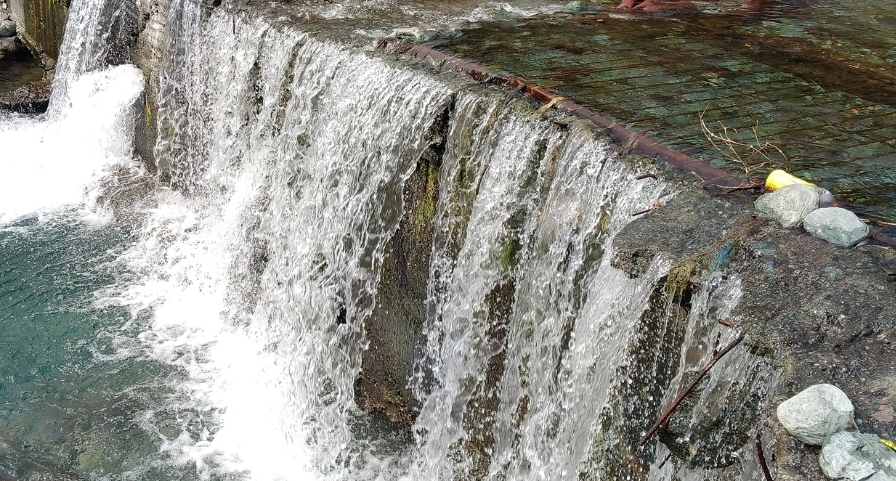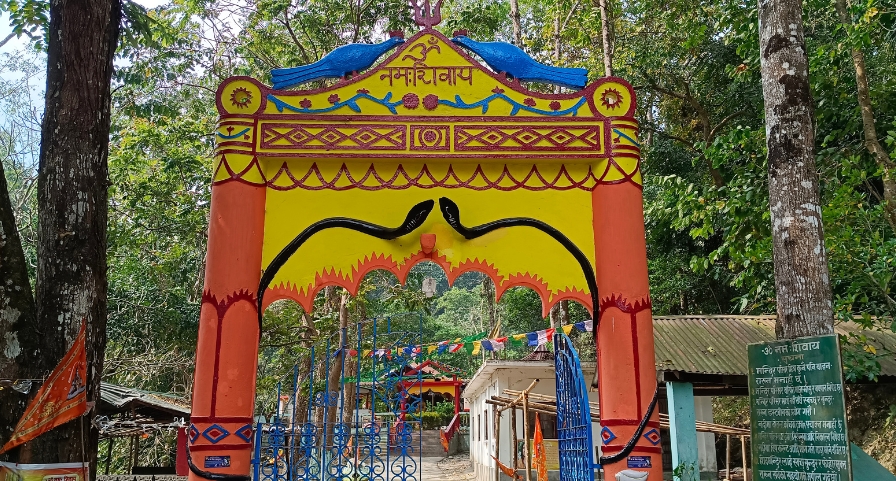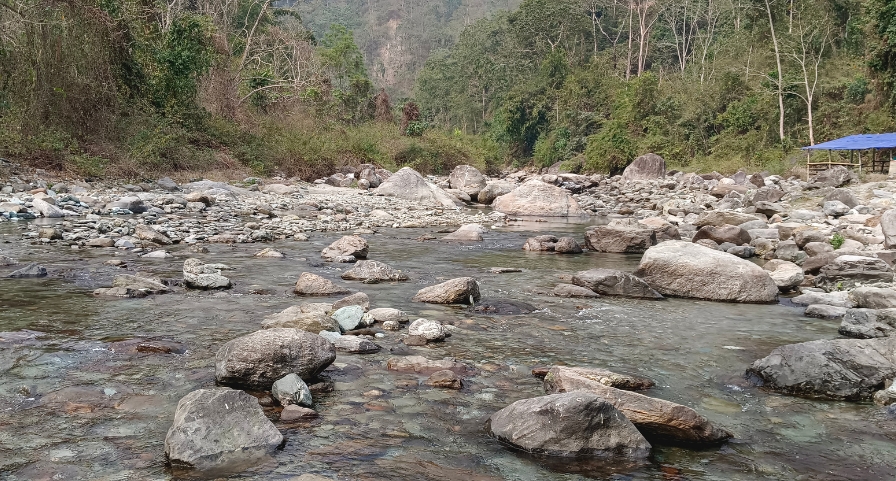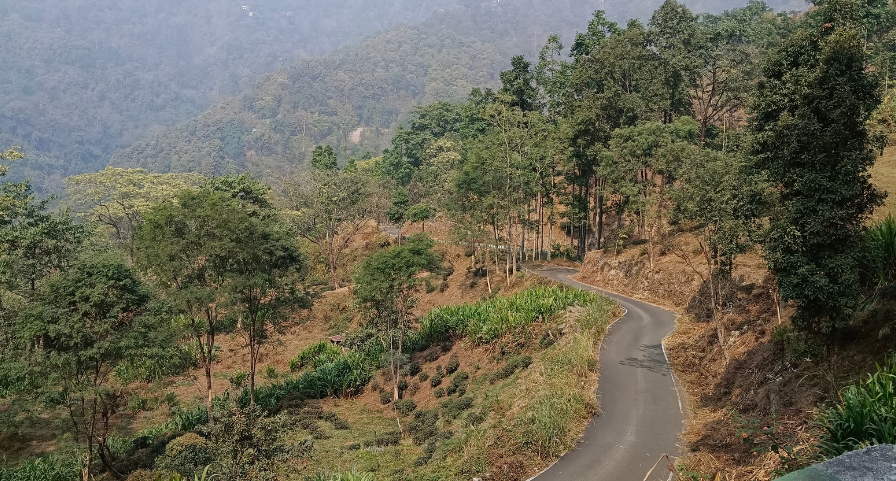IQAir’s 2024 report lists India as the fifth most polluted country in the world with Byrnhit, a town in Meghalaya, topping the charts for being the most polluted metropolitan area globally. In complete contrast is Shivakhola, a serene hamlet located in the Darjeeling district of West Bengal, where nature seems to have its pious touch in every nook and corner.
An ideal setting
Shivakhola is the combination of two different words. Shiva which signifies Lord Shiva and Khola, a Nepali term that means river or stream.
The hamlet is surrounded by mountains and is completely peaceful. The crystal clear water is a rarity nowadays. We come here along with friends and spend some time here with villagers who are quite friendly.

Also watch: A sacred forest of spirituality & tradition in Meghalaya
Nestled amidst the stunning landscape of green mountains, forests and gurgling brooks from the hills, time comes to a standstill in Shivakhola as the sound of gushing water from the hills fills the mind with peace and transports one far away from all-worldly worries.
The most stunning attraction of the Shivakhola village is its waterfall and the several small streams that it feeds. The riverfront is a perfect place to spend time in solitude.
Gopal Saha, 34, a two-wheeler driver in neighbouring Siliguri, comes to Shivakhola at least twice a month. “The journey to Shivakhola is memorable as the route passes through the fringes of Mahananda wildlife sanctuary, with a green canopy of trees on both the sides. The snaky narrow gauge railway track connecting Siliguri to Darjeeling adds another charm to the ride,” says Saha.
“As a two-wheeler driver, I am compelled to spend several hours of the day on polluted roads. But a visit to this hamlet energises my soul. I spend hours here sitting quietly with nature,” he adds.
For those seeking serenity
Shivakhola is a popular destination for tourists, especially from within the state. Most take a bath in the river Mahananda and try their hand at fishing.
“The hamlet is surrounded by mountains and is completely peaceful. The crystal clear water is a rarity nowadays. We come here along with friends and spend some time here with villagers who are quite friendly,” said Abhishek Banik Dutta, 32, a resident of Alipurduar district of West Bengal.

Apart from the waterfall and river, the major attraction in the hamlet is a Lord Shiva temple that witnesses huge crowds during festivals like Shivaratri. Legend has it that the temple has a naturally formed Shivling.
The hamlet is also a haven for bird watchers and photographers alike as a wide range of birds such as peafowls, Magpie, great hornbill etc inhabit these pristine surroundings.
Shivakhola also has an adventure camp with tents and cottages set on the bank of the river.
Also watch: Mawlynnong: The village that redefines cleanliness
Livelihood for locals
The pristine hamlet with 50 households has a population of just 300 people. Majority of them work in the nearby tea gardens. Some of the villagers have also set up food stalls on the bank of the river and outside the temple for tourists.
“I used to earn Rs 500 as a daily wage while working in Delhi but I returned home during the pandemic-induced lockdown and set up a food stall here. I usually earn Rs 700-800 every day and even more during the festivals when the footfall is high,” said Mandeep Tamang, 30, a food stall owner.
Munni Tamang, 42, who runs an eatery on the river bank said she makes a decent income during the peak season that ranges from October to April. “I sell steam dumplings (momos) and earn around Rs 800 each day during the peak season. The earnings help to supplement my family’s income as my husband works at a tea garden and his income is not enough to run the family,” she said.

Villagers also highlighted the problems they have to face due to the remoteness of the location. “We are lucky to reside in the lap of nature, away from the fast paced city life, but we face a severe dearth of health facilities. The nearest Primary Health Centre is located around 15 km away and lacks adequate facilities. Most serious patients need to be taken to Siliguri which is 30 km away,” said Sanip Tamang, 35, a villager.
Despite the difficulties faced by the locals, they make for cheerful company. As the evening envelops the sky, villagers are seen retiring to their humble huts while tourists continue to praise the beauty of the place as they prepare to return to their dwellings too.
The logistics
Tourists coming to Shivakhola can also visit the picturesque Kurseong (42 km away), Darjeeling (75 km) and other neighbouring hill stations.

Shivakhola is well connected with New Jalpaiguri and Siliguri stations. The nearest airport is Bagdogra. The hamlet can be visited across the year except during the heavy monsoon season in June, July and August.
Winters are the best time for the bird watchers as the weather is pleasant.
Also watch: Meghalaya’s whistling village, where melody is the language
Gurvinder Singh is a journalist based out of Kolkata.
The lead image on top depicts the road winding up to the hamlet of Shivakhola, nestled in the foothills of West Bengal’s Darjeeling district. (Photo by Gurvinder Singh)







